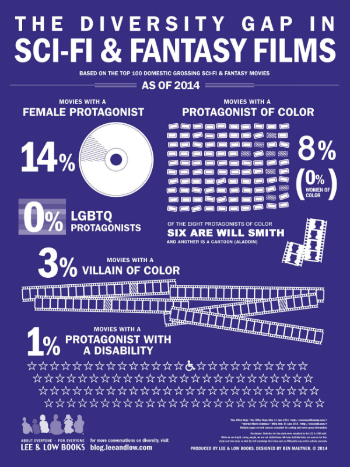This is a guest post by Zoe Samuel.
We live in the age of data, on the personal and demographic scale. Research is changing our understanding of who consumes content, how they do so, and what value they offer advertisers and partners. We know now that there is a group of people who control 70 percent of domestic consumer spending; spend more time on social media; buy 52 percent of movie tickets and 68 percent of theater tickets; and watch more TV than any other group. This demographic is vast: 51 percent of the population.
The group in question is, of course, women. The market opportunity represented by this demographic, as creators and consumers, remains the greatest source of untapped or under-exploited revenue in entertainment.
The amount of competition for the attention of women, when compared to the amount of competition for men, is still currently very low. This demo is horribly under-served, both in the quality and the quantity of content available to it. As far as quality, when it looks at a screen, it is perhaps surprising that it doesn’t have a rage fit and throw things. If it were to buy into how it is portrayed on the screen, it would see itself as few in number; vapid and narcissistic; over-sexualized but rarely possessing any actual desire of its own; an unfunny mirror for other people’s comedy; limited in age range; almost entirely devoid of agency (bearing in mind that feistiness is not a substitute); and just plain stupid. Even given all of this, it is still the bedrock of the market.
Regarding quantity, the mere fact that content is predominantly still aimed at men is proof in and of itself that instinct, not data, is guiding decision-making here, and that that instinct is about 40 years out of date. Men are spoilt for choice; women are starved. Targeting women is like selling ice to a Bedouin, during a heatwave, in a particularly bad year for the ice harvest. Quality content for women has scarcity value.
There is a huge opportunity here. If women buy even when they are not targeted, they buy many times over when they are. This demo rapaciously consumes any content that speaks to it as it is, and as it wishes it could be: three-dimensional, flawed, sexual, old, young, eccentric, powerful, intelligent, funny, varied. Whenever it is treated with this sort of basic respect, it shows up in vast numbers: Bridesmaids, The Heat, The Hunger Games, The Fault In Our Stars, Gone Girl, Divergent, Frozen, Cinderella … these are not aberrations. This is not a niche. This is the invisible hand at work, throwing huge piles of money at people who are paying attention.
This is a demo worth aiming content at, and that requires creators who get their audience’s needs and wants. Selling to a demographic you don’t understand is essentially impossible. And the only way to understand women is – just as with men – either to listen to them, or be them. Clearly men who listen to women can write for women: the songs that made Frozen a hit were written by a married couple, Bobby Lopez and Kristen Andersen-Lopez. Joss Whedon has impeccable credentials when it comes to appealing to women. Shakespeare was doing it centuries ago. It works in reverse, too: Kathryn Bigelow has made a stellar career out of making very dudely movies watched mostly by dudes.
That said, there are certainly correlations showing that women on the team result in women on the screen, and we’ve already established that women on the screen equals bringing in the green. The same way that women in the boardroom correlate with higher profits, women on the creative team are good for the bottom line. In the words of Sheryl Sandberg, “If men want to make their work teams successful, one of the best steps they can take is to bring on more women.” Shows with a more mixed writers’ room enjoy higher audience retention and are more likely to get a second season. Just as people typically hire in their own image, they tend to create in their own image, which means a team with a bigger variety of voices is more likely to competently portray a variety of characters. It’s not because the creators are better, but that they are unlike each other. It’s Darwinian; their strength comes from their variety. (It is probably–and it would be great to see data on this–also because the sort of company that hires and promotes against stereotype when it comes to women is self-evidently adaptable and creative, and is thus more robust in other ways, such as hiring the highest quality men.)
Women, as an audience, represent more value for less effort. Data is everything, and the data doesn’t lie. What’s happening to the media marketplace is not a trend. It’s not even a movement. It’s the economy, stupid, and it’s not going away.
In short, it doesn’t matter how you feel about women qua women. What matters is how you feel about money, qua money, in your wallet, paying your bills, sitting on your driveway in the form of a really expensive car (that, statistically speaking, your wife bought). The last person into any market has the toughest time. The wise course is to get in now before all the best seats are taken, and then fill a bunch of them with women. Alternatively, leave all that money on the table, and wait for someone else to come along and take it.
Zoe Samuel is a British-born writer who writes for stage and screen from her home on a plane between New York and London. She’s also VP of Theater for Concert Live, who provide mobile merchandising and data analytics for live events. Talk data to her at zoesamuel.com and @zoe_samuel.








